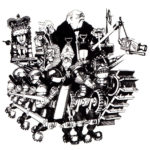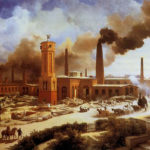Contrary to accepted views, Latin American(LA) States are still comparatively incipient and have been so since independence in the 19th Century. But they have also managed to avoid large-scale and continuous wars between them, in sharp contrast with Western European states. How can we explain this apparent paradox while taking into account regional differences among LA states?
That is the main purpose of Centeno’s book. To answer this, Centeno uses the so-called “bellicist” approach, which tells us that “states make war and war makes states.” Tilly is certainly one of the main proponents of such a theory. However, he was always clear that his analysis was limited to Western Europe and should not be considered a universal model of state development.
Regardless, Centeno presses and argues that the bellicist approach offers three distinct advantages: 1. It is a proven and simple model that can work in many contexts; 2. It might be relevant for developing nationalism and democracy; and, 3. It factors in the international perspective in state formation. However, in the case of Latin America, Centeno argues, the explanatory power of the bellicist approach is substantially reduced. In that sense, LA state development seems to be an exception and can shed new light on the macro-historical analysis of state development (pg. 20).
LA states fought what the author calls (international) limited wars which did not demand large fiscal resources; did not cover large geographical areas; did not require large professional armies; were fought among countries with similar ideological and cultural values; and did not affect the average person directly. The bellicist approach, in contrast, suggests that: 1. Wars increase the capacity of the state to extract resources; 2. Drive state centralization to the detriment of local and regional powers; 3. Helps develop the idea of the nation; and finally, 4. Converts subjects into actual citizens.
With this in hand, Centeno dedicates a chapter to each of the above four factors to study the peculiarities of LA’s state development. In the end, we learn that Latin American States did not make war simply because there were no actual nation-states to do so (pgs. 263-264). This is certainly one way to preserve the “states make war” dictum, which apparently the author wants to sustain.
So what about the second part of the dictum: did wars contribute to LA’s state development? No, they did not, as they were few and far apart. But it is important to distinguish here, Centeno adds, between international and civil wars. Civil wars were also markedly different from those happening in Western Europe and the US and thus did not contribute to state formation.
Centeno then concludes by saying that “Perhaps the most important lesson is that the formation of nation-states is not inevitable” (pgs. 274-275). If this is so, then the development of Western European states is rather the exception, not the rule. The Balkans and Eastern Europe are also examples that could support such views.
The bellicist approach works if three critical conditions exist: 1. A basic level of institutional and administrative capacity must previously exist for war to be a factor in state formation; 2. Part of the elites must see state formation as promoting their own interests; and 3. The state must have a clear notion about the concept of nation. None of this was at work in LA in the 19th century.
In the end, I can see two major gaps. One is an adequate definition and theory of the state. It seems the state is an empty set sitting around waiting for someone to take it over and develop it. For example, a “weak” state might also help the elites preserve and promote their own interests, especially in a context where land is relatively abundant, national boundaries have been pre-established by colonial powers, and geographic distances are large vis-a-vis existing communication means, etc. So the state is not developed because it will be contrary to the interests of the ruling elites. The state is thus not an empty, neutral set.
And this links to my second point: the relationship between state formation and the development of capitalism. The latter only started in LA in the late 19th century, although not in most countries. The integration of LA countries into the global markets can be a driver for state formation in the region. In this context, traditional elites were forced to open doors to the newcomers linked to the import/export sector. Such developments demand a more effective state that can help promote capitalist development while balancing the now diverse interests of the ruling classes. By the same token, Western European states developed in the context of a feudal economy that generated the absolutist state. There is thus a connection between the “mode of production” and the development of a nation-state that needs to be explored in more detail.
Centeno, Miguel Angel. 2002. Blood and Debt: War and the Nation-State in Latin America. University Park: Pennsylvania University Press. ISBN: 978-0271-023069.
Cheers, Raúl





